How Nexxen’s Discovery Platform, DSP and Human Intelligence Helps Lexus Achieve Success YoY

Interviewed by: Carol Gillard Linkedin Icon-xtwitterlogo-black Albert Thompson, Managing Director at Walton Isaacson is a seasoned marketer with 20 years of experience working with auto clients, and 16 of those years have been focused on Lexus. He continuously looks to data that helps him better understand consumer intent before activating his campaigns to drive performance for his client–going beyond CTRs and VTRs as metrics for success. As a long-standing partner using Nexxen’s Discovery tool and DSP (Albert and Walton Isaacson’s relationship spans many mergers and acquisitions), we sat down with him to learn more about why he chooses Nexxen as a partner. Nexxen has always been about unpacking the decisions people make and better understanding them. That’s what’s unique about the Nexxen DSP, it’s probably the only engine that is bolted onto a business intelligence framework, so we know real consumer intent and how to target before execution. Nexxen, has always been about unpacking the decisions people make and better understanding them. That’s what’s unique about the Nexxen DSP, it’s probably the only engine that is bolted onto a business intelligence framework, so we know real consumer intent and how to target before execution. Consumer intent-level data for precision targeting through DSP I work in an agency, but I’ll tell people I’m not an agency person or media person either–all I care about is why consumers buy what they buy. So, I think my relationship with Amobee, and now Nexxen, has always been about unpacking the decisions people make and better understanding them. That’s what’s unique about the Nexxen DSP, it’s probably the only engine that is bolted onto a business intelligence framework, so we know real consumer intent and how to target before execution. For instance, we know that Lexus dealers want a warm lead–someone who knows what they want. So, the only way we started with our Nexxen campaigns was using the narrow domain of interest around the Lexus vehicle to target–this is data we got from the Discovery tool. Supply path optimization before “SPO” was a pressing issue Cleaning up the supply chain is a conversation that Walton Isaacson and Nexxen (since the Amobee days) have always had. This goes back years before anyone talked about removing unnecessary intermediaries and wasting impressions on junk sites. So, we never had MFA, or click bait, or quality of audience targeting, or brand safety issues when working together. With this sort of “excellence in the details” mantra, we collectively were always about understanding the real “why” behind performance. Audience intelligence informed by AI and people My philosophy is that if you marry human thinking and intelligence with a machine that can do that at scale, then that deep learning then feeds the targeting engine and execution; that’s like marrying a consulting firm with a big buying agency with smart people. That’s why consultancy firms started buying agencies, because they’re tethering strategic consulting to execution, which is the way it should have been from the beginning. But what’s missing is robust technology that can accelerate all that. To me, that’s really what Nexxen does. I only worked with partners who let me “program the machine.” I need to be able to provide intel, send white papers, reports, industry research, client data, because the only way that the highest threshold of intelligence in an engine can be achieved is when there’s human input. Nexxen’s DMP functions more like a CDP–it’s evolved over time to house more intent-based data sources and store that data longer. That makes it so much easier for the machine to be fed and learn, and that’s what I’ve been doing with the Discovery platform for years. A long-term relationship built from dedicated customer service and consultative collaboration Nexxen has a good team of people and good tech–I know from speaking to your engineers. I always tell people if you get to the 10th person removed from your rep and you still like them [the company], it’s a good organization. You guys have always done a great job of having account people and engineers all in the room at the same time to have multidimensional dialogue in the same conversation, and most other companies just don’t. That’s a lost art in this business. Intelligence data that fuels business not solely campaigns If a partner hands me an audience report, Nexxen Discovery is the kind of report that needs to be the standard–they’re the reports that I can hand to a client for them to make better business decisions with. When I look at everyone else’s, the reporting is not robust and it’s just basic one-size-fits-all. During COVID we gave Lexus the Discovery reports that looked at hybrid interest and adoption and monitored it go down and then rebound, which was key for local markets at the dealer level [to know]. All that was worth gold to a marketing type because the only category and the only industry where I see that kind of intelligence is pharmaceutical. Proven results YoY Early in the relationship with Nexxen, when we were optimizing the DMP with Discovery data around online inquiries, we had so much success with the campaign that I think it was unbelievable to the client. At first, they noted that purchase inquiries were a very narrow KPI–but then the number of test drives were so off the charts that they didn’t believe it until we were doing it year-over-year. Read the Lexus case study Read Next
Life At Nexxen with Mike Connon
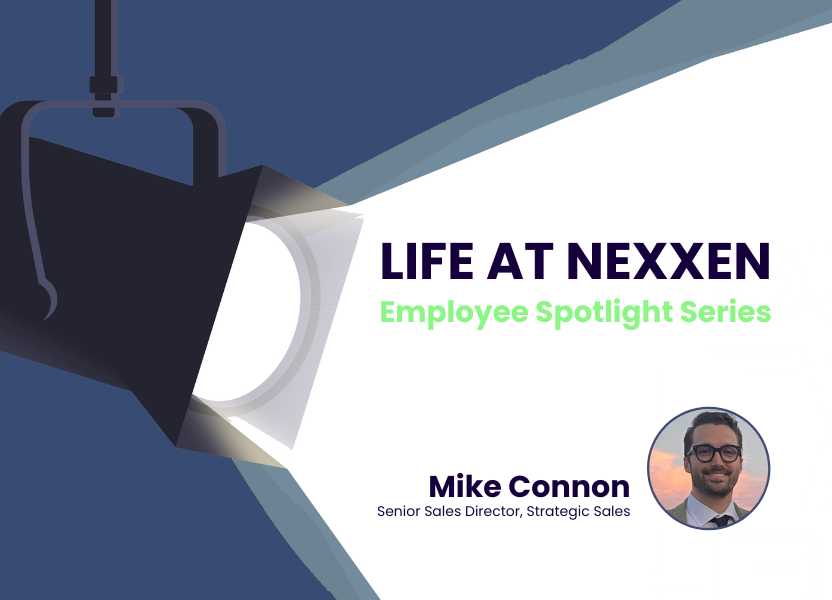
In our latest installment of Life at Nexxen, we sat down with Mike Connon, Sr. Sales Director on the Strategic Sales Team. We discussed what it’s like to manage your own team, the skills you need in any sales role, and the musical start to his career.
What Should You Know About Voice-to-Action Campaigns? A Q&A with Say It Now
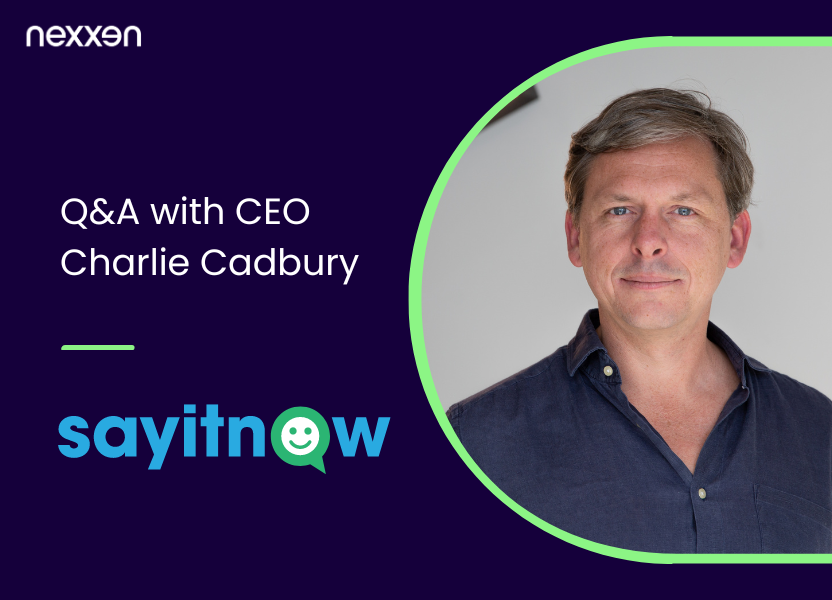
Interviewed by: Adam Mugridge, Director of Creative Solutions, Nexxen Studio Linkedin Icon-xtwitterlogo-black Last month, I had the pleasure of joining leading voice-to-action ad tech group Say It Now – and a handful of their clients and partners – for an afternoon discussing all things actionable audio advertising. I walked the crowd through the ways in which connected TV (CTV) and voice-to-action can work in tandem to engage audiences and drive action, and had the privilege of listening to a few members of the Say It Now team discuss the opportunities that lie ahead in this space. Afterwards, I sat down with Say It Now’s CEO, Charlie Cadbury, to dive a bit deeper into the future of voice-to-action tech (particularly in relation to CTV campaigns). Here’s what he had to say. First and foremost, can you tell us about Say It Now and its voice-to-action technology? With pleasure! Say It Now is an ad tech business helping brands engage with the 60% of UK homes and 90 million US homes that now have a smart speaker. The point of an advertisement is to raise understanding and inspire an action. It is easier to engage ‘in the moment’ by saying a few words out loud than to get out your phone, unlock it, open a browser and type a brand CTA into a search engine where you are often met with many challenger sales. Think of it like voice-enabled QR codes. We have built a suite of technology that makes it simple to create, launch and measure these types of campaigns, and their popularity is massively on the rise. How does this voice-to-action tech integrate with CTV? Seamlessly. There is no technical integration. The only change on the creative unit is the call-to-action, which tells the audience they can engage by saying things like, ‘Alexa, Let’s Texas!’ We create a branded voice ‘landing page’ that sits within Alexa, waiting for someone to invoke them by saying ‘Alexa, let’s Texas.’ Once they have a short-branded conversation, building on the ad creative and are often then offered an opportunity to be sent a link to find out more. Every step of this engagement is measured and reported back through the Say It Now data studio. What are the opportunities for brands and advertisers who are looking to utilise both CTV and voice-to-action in future campaigns? Many and varied. We have seen great successes in QSR, Travel, Auto, Retail and Technology verticals, with advertisers driving to appointment booking, offers, app download or voice commerce. We are building out vertical-specific benchmarking, but as these are often net new engagement metrics for a brand, the best benchmark to beat is your own. We are seeing several clients charting a path to more performance through their CTV campaigns using this new data. It is easier to engage ‘in the moment’ by saying a few words out loud than to get out your phone, unlock it, open a browser and type a brand CTA into a search engine where you are often met with many challenger sales. It is easier to engage ‘in the moment’ by saying a few words out loud than to get out your phone, unlock it, open a browser and type a brand CTA into a search engine where you are often met with many challenger sales. And what are some key considerations these brands and advertisers should keep top-of-mind? They will be leaders. This is still a nascent area, and many categories are still to have ‘firsts,’ which means these campaigns are more likely to get extra exposure. Their case studies are going to be poured over by competitors, who will then follow. I guess the biggest consideration is do you like to lead or follow? Last but not least, how can brands measure the effectiveness of their CTV and voice-to-action campaigns, after they’ve run? This is the best bit. Real-time information has always been hard to get with CTV campaigns. We can report on engagement as the campaign runs, so brands have access to information they can use to understand and optimise the efficacy of their campaigns. They can then take that insight to make the same spend go further. We can report on impressions, engagement, conversational dwell time with the branded voice experience and conversational outcomes. We are adding more insight all the time. Read Next Connect With Us Learn how you can effectively and meaningfully leverage today’s video and CTV opportunities with our end-to-end platform, data and insights. Contact Us
Nexxen Connect: Q&A on Political Advertising with Andrew Mullins
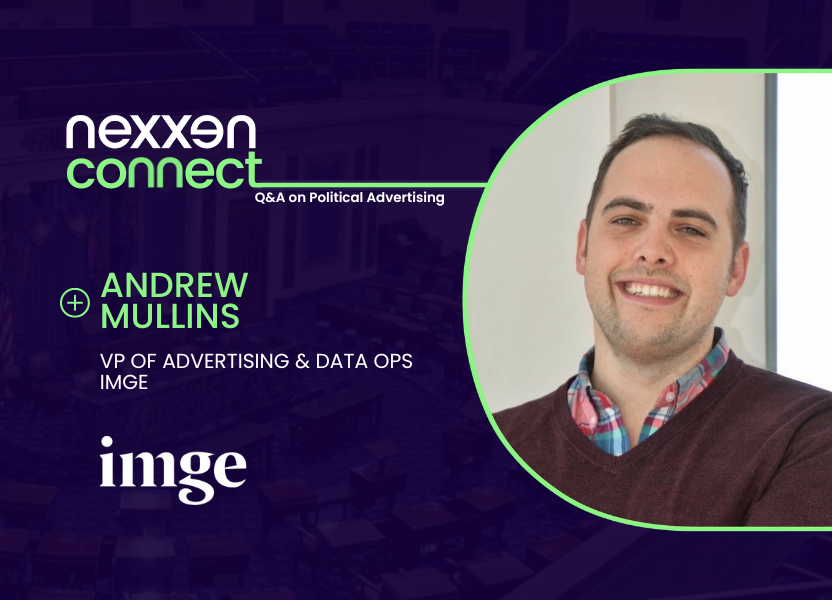
From crafting viral ad campaigns to spearheading digital strategies, Andrew Mullins has done it all. His insights from the front lines of political advertising offer a unique glimpse into the ever-evolving world of campaign strategy. Read more.
Integrating Data Science into Product and Technology Organizations

Integrating data science into a product or technology organization is a strategic move that can drive innovation, enhance decision-making, and create competitive advantages. However, the process is not without its challenges, including aligning data science projects with business goals, ensuring effective communication between data scientists and other teams, and implementing scalable solutions. In this blog post, we’ll explore Nexxen’s key strategies for successfully integrating data science into a product or technology organization. 1. Define Clear Objectives and Metrics The first step in integrating data science into a product organization is to define clear objectives and metrics. This involves understanding the business goals and how data science can contribute to achieving these goals. It’s important to set specific, measurable, achievable, relevant, and time-bound (SMART) objectives, along with key performance indicators (KPIs) to track progress. This clarity helps align the data science team’s efforts with the organization’s strategic goals and provides a framework for measuring success. 2. Foster Collaboration and Communication Effective collaboration and communication between data scientists, product managers, engineers, and other stakeholders are crucial for the success of data science projects. Encourage regular cross-functional meetings, where team members can share updates, discuss challenges, and brainstorm solutions. Tools such as shared project management software can help facilitate communication and keep everyone on the same page. Additionally, promoting a culture of data literacy across the organization can enhance understanding and collaboration. 3. Implement Agile Data Science Practices Adopting agile methodologies can significantly benefit the integration of data science into product development. Agile practices, such as iterative development and continuous feedback, allow data science teams to be more adaptive and responsive to changing business needs. This approach encourages experimentation, rapid prototyping, and the flexibility to pivot as required, leading to more innovative and effective solutions. Promoting a culture of data literacy across the organization can enhance understanding and collaboration. 4. Ensure Data Quality and Accessibility The foundation of any successful data science initiative is high-quality, accessible data. Invest in the infrastructure and processes needed to collect, store, and manage data effectively. This includes implementing robust data governance policies, ensuring data privacy and security compliance, and providing data scientists with the tools and access needed to analyze data efficiently. A centralized data platform can facilitate data sharing and collaboration, while also maintaining data integrity. 5. Build Scalable and Maintainable Solutions As data science projects move from prototype to production, it’s important to focus on scalability and maintainability. Work closely with the engineering team to ensure that data science models can be integrated into the product in a way that is scalable, reliable, and easy to maintain. This might involve adopting microservices architectures, containerization, and continuous integration/continuous deployment (CI/CD) practices to streamline deployment and updates. 6. Cultivate a Data-Driven Culture Finally, integrating data science into a product organization requires cultivating a data-driven culture. This means encouraging decision-making based on data and analysis rather than intuition or assumption. Provide training and resources to help employees understand the value of data science, and celebrate successes when data-driven projects achieve significant results. A data-driven culture fosters innovation, encourages evidence-based decision-making, and can significantly enhance the organization’s competitive edge. A data-driven culture fosters innovation, encourages evidence-based decision-making, and can significantly enhance the organization’s competitive edge. Conclusion Integrating data science into a product organization is a complex but rewarding endeavor. By defining clear objectives, fostering collaboration, implementing agile practices, ensuring data quality, building scalable solutions, and cultivating a data-driven culture, organizations can unlock the full potential of their data science capabilities. This strategic integration can lead to more innovative products, improved customer experiences, and a significant competitive advantage in the market. Join our Team Read Next
Life At Nexxen with Vanessa Nguyen
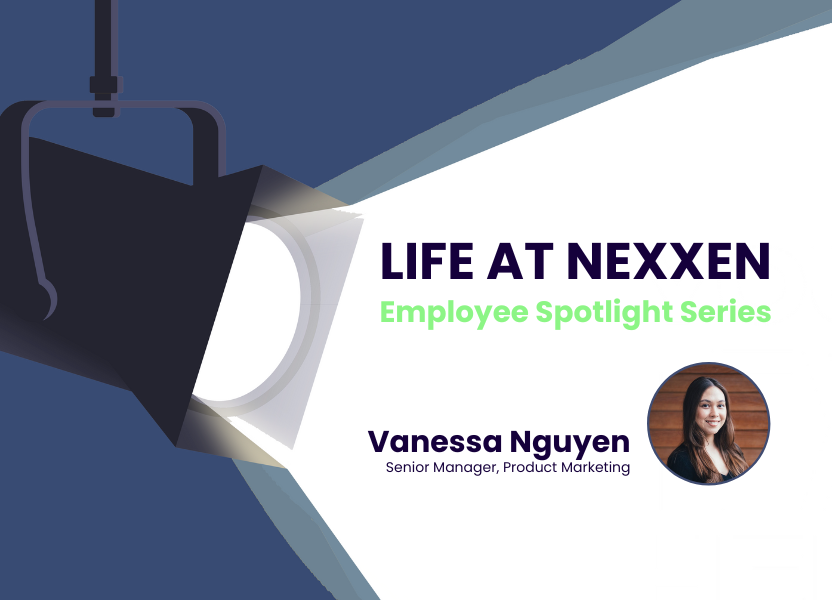
In our latest installment of Life at Nexxen, we sat down with Vanessa Nguyen – a senior manager on our product marketing team. Vanessa dives into the general product launch process, what she enjoys about where she lives, and what she’s most excited about for Nexxen’s identity resolution offerings this year.
Nexxen Rings the Closing Bell at the Nasdaq Stock Market Exchange
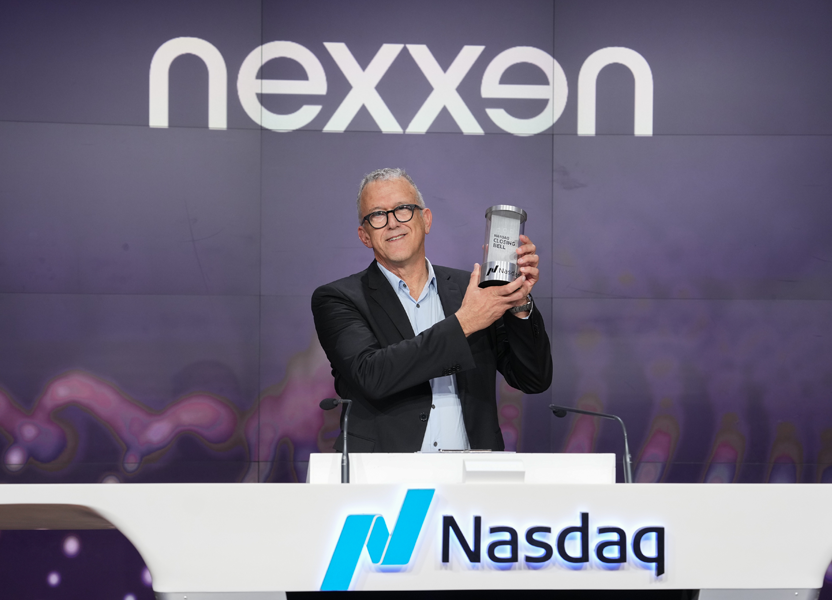
In 2023, we reached a momentous milestone by consolidating all our products and platforms into a single brand: Nexxen. On Wednesday, February 28, 2024, we commemorated this achievement with a new ticker symbol, NEXN, and by ringing the closing bell at the Nasdaq stock market exchange. Our CEO, Ofer Druker, summed the day up best in his remarks at the podium: Several years ago, we embarked on a mission and strategic journey to become leaders in the Connected TV or “CTV” advertising arena. We strongly believed, and correctly predicted, that CTV was the next major frontier for advertisers to reach potential customers, enhance brand recognition, and drive future growth. We also strongly believed that serving both sides of the advertising ecosystem through an end-to-end platform featuring both a DSP and SSP was best for customers. So, we started to operate this way, and built out our platform with this concept in mind. And now, we celebrate all that this eventually became. In 2023, we reached a major milestone in unifying our products and platforms under a single brand – Nexxen. Nexxen is a nod to the horizontal nature of our platform, borrowing from a Latin word meaning “to connect.” The new name captures our ability to link different parts of the ecosystem, including the demand and supply sides, as well as linear and Connected TV, to create something that is both future-facing and impactful. Our path has seen significant organic growth, a public listing in the US, the creation of key partnerships, the successful acquisition and integration of several companies, and our rebrand. I am so pleased and proud to join you all – my colleagues, our partners and industry friends – today, with more conviction than ever that the steps we have taken have been the right ones. I want to wish us all good luck and to continue on our journey together for years to come. Click here to access additional event photos and the full ceremony recording. Read Next
Nexxen Connect: Q&A on Political Advertising with Chauncey Southworth
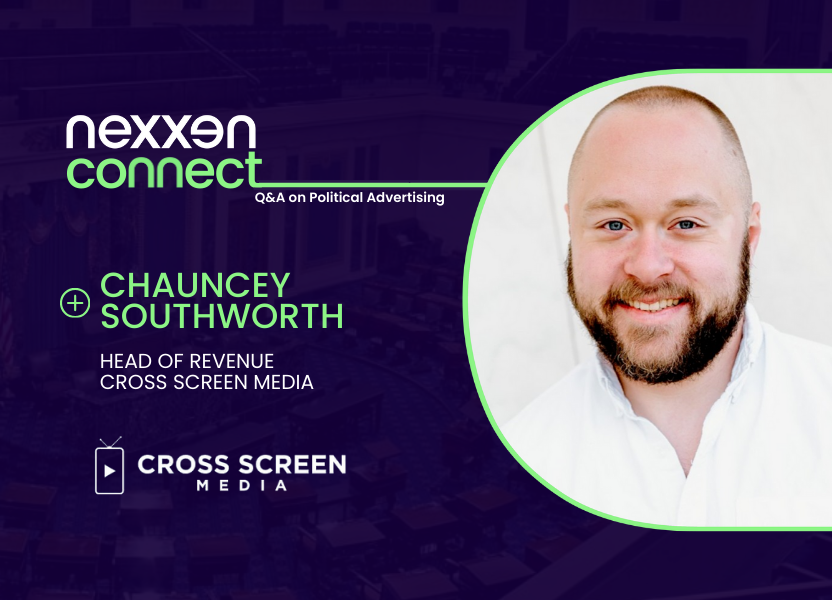
From navigating political races to breaking down traditional silos, Chauncey Southworth, Head of Revenue at Cross Screen Media shares the game plan for boosting reach across channels this political season.
Innovating at Speed: Nexxen’s Journey through the GenAI Hackathon
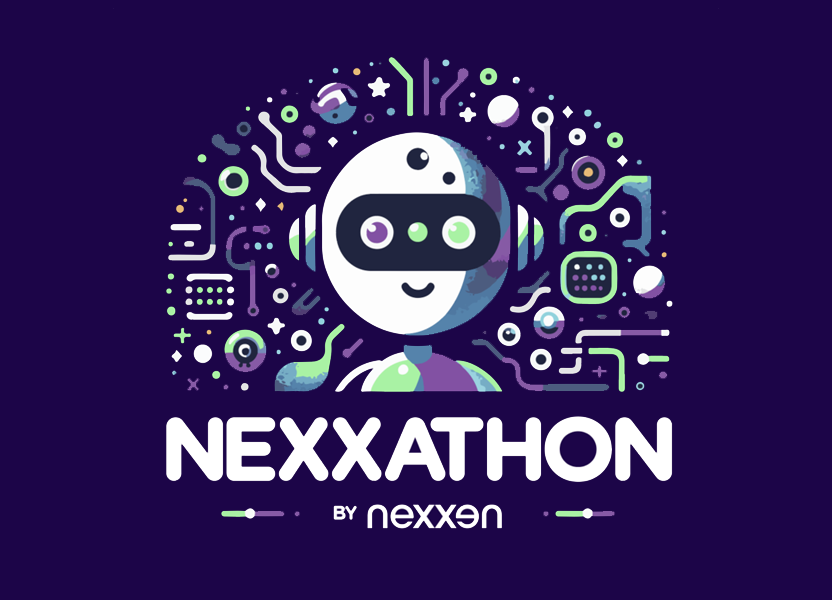
At Nexxen, we recently held a unique event at our Tel Aviv Engineering site: Nexxathon TLV. This two-day hackathon focused on Generative AI and the use of OpenAI’s API, bringing together a diverse group of our team members. From developers to data scientists, product managers to BI experts, more than 70 of our colleagues collaborated in an environment that fostered both learning and creativity. Nexxathon TLV was more than just a competition; it was an opportunity for our teams to deepen their understanding of AI technologies and explore practical applications in our work. In this blog, we’ll share insights from the hackathon, discuss the innovative solutions developed and reflect on how this event showcases Nexxen’s commitment to ongoing technological growth. The Practical Choice of OpenAI’s API Our decision to center Nexxathon TLV around OpenAI’s API was driven by a clear objective: to enable our teams to create tangible, working AI implementations within a limited timeframe. This choice distinguished our hackathon from others, where the focus often leans more towards conceptual designs and presentations. OpenAI’s API provided an accessible yet powerful tool that allowed our teams to see their ideas come to life. It simplified the learning curve, making it possible for our diverse teams to not only conceptualize, but also materialize their AI-driven projects. This approach was pivotal in moving beyond the theoretical and into the realm of practical, usable solutions — a cornerstone of Nexxen’s ethos in embracing and implementing new technologies. It simplified the learning curve, making it possible for our diverse teams to not only conceptualize, but also materialize their AI-driven projects. It simplified the learning curve, making it possible for our diverse teams to not only conceptualize, but also materialize their AI-driven projects. The Hackathon Experience The format of Nexxathon TLV was carefully designed to maximize productivity and innovation within the short span of two days. Day one was dedicated to planning – a crucial phase where teams brainstormed and laid out their strategies. This initial stage set the foundation for what was to come, allowing each group to clarify their ideas and approaches. Day two was all about execution. This is where the magic happened, with each team transforming their plans into reality. The diverse makeup of the teams – including members from Data, Webapps, IT and BI – proved to be one of the event’s greatest strengths. By bringing together individuals from various domains, we not only fostered a dynamic exchange of ideas, but also enhanced the overall camaraderie within the company. This cross-functional collaboration is essential in a field as interdisciplinary as AI, and it was inspiring to see how different perspectives and expertise contributed to innovative solutions. Spotlight on Innovation Nexxathon TLV was a platform for groundbreaking ideas, where each team brought something unique to the table. A remarkable example was the winning team’s creation of a JavaScript tool for enhancing user interaction within our UI. This tool allows users to get context-sensitive insights on specific terms just by selecting and highlighting them in any application. Equally impressive was the development of ‘Segmentor,’ a clever tool aimed at aiding advertisers in selecting the right audience segments. By uploading their creative content and a brief campaign description, Segmentor utilizes data from our internal systems to suggest the most effective audience targeting strategies. These innovations illustrate Nexxen’s commitment to practical and impactful technological solutions. The hackathon wasn’t just about ideas; it was about turning those ideas into functional tools that can enhance our operations and user experience. The hackathon wasn’t just about ideas; it was about turning those ideas into functional tools that can enhance our operations and user experience. The hackathon wasn’t just about ideas; it was about turning those ideas into functional tools that can enhance our operations and user experience. Integrating AI into Nexxen’s Future The success of Nexxathon TLV goes beyond the two days of the event –it marks the beginning of a new chapter in Nexxen’s journey with AI technology. The hackathon’s innovative outcomes are stepping stones towards integrating AI more deeply into our products and operations. The tools developed are not just hackathon projects, they are prototypes of what will soon be integral features of our offerings. Their integration into our existing systems will enhance the user experience and operational efficiency, illustrating our commitment to not only exploring AI, but making it a core component of our business strategy. This initiative is a clear indication of Nexxen’s future direction, one in which AI is a fundamental part of how we operate and innovate. As we move forward, these AI-driven tools and methodologies will play a crucial role in shaping our products, services and customer interactions. In addition to developing AI solutions, the hackathon played a pivotal role in enhancing our organizational dynamics –proving that when we work together without barriers, we can achieve remarkable things. Nexxathon TLV exemplified Nexxen’s commitment to innovative collaboration. This hackathon not only showcased our technical expertise but also promoted a transformative company culture. As we build on these achievements, Nexxen is poised for a future where teamwork and technology continue to drive our success in the industry. Read Next
Life At Nexxen with Joeyee Li
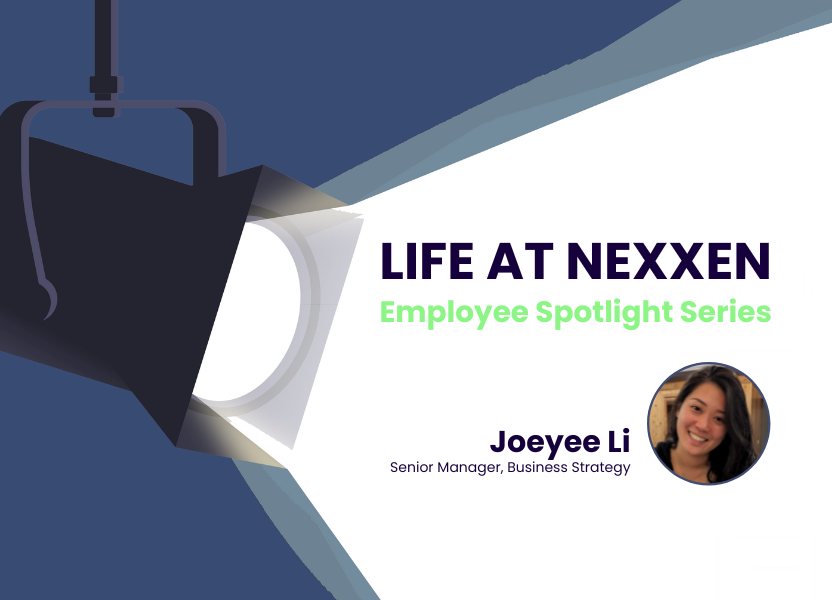
In our latest installment of Life at Nexxen, we sat down with Joeyee Li – a senior manager on our business strategy team. Read the article to see Joeyee’s day-to-day life at Nexxen and her favorite restaurants in New York.
